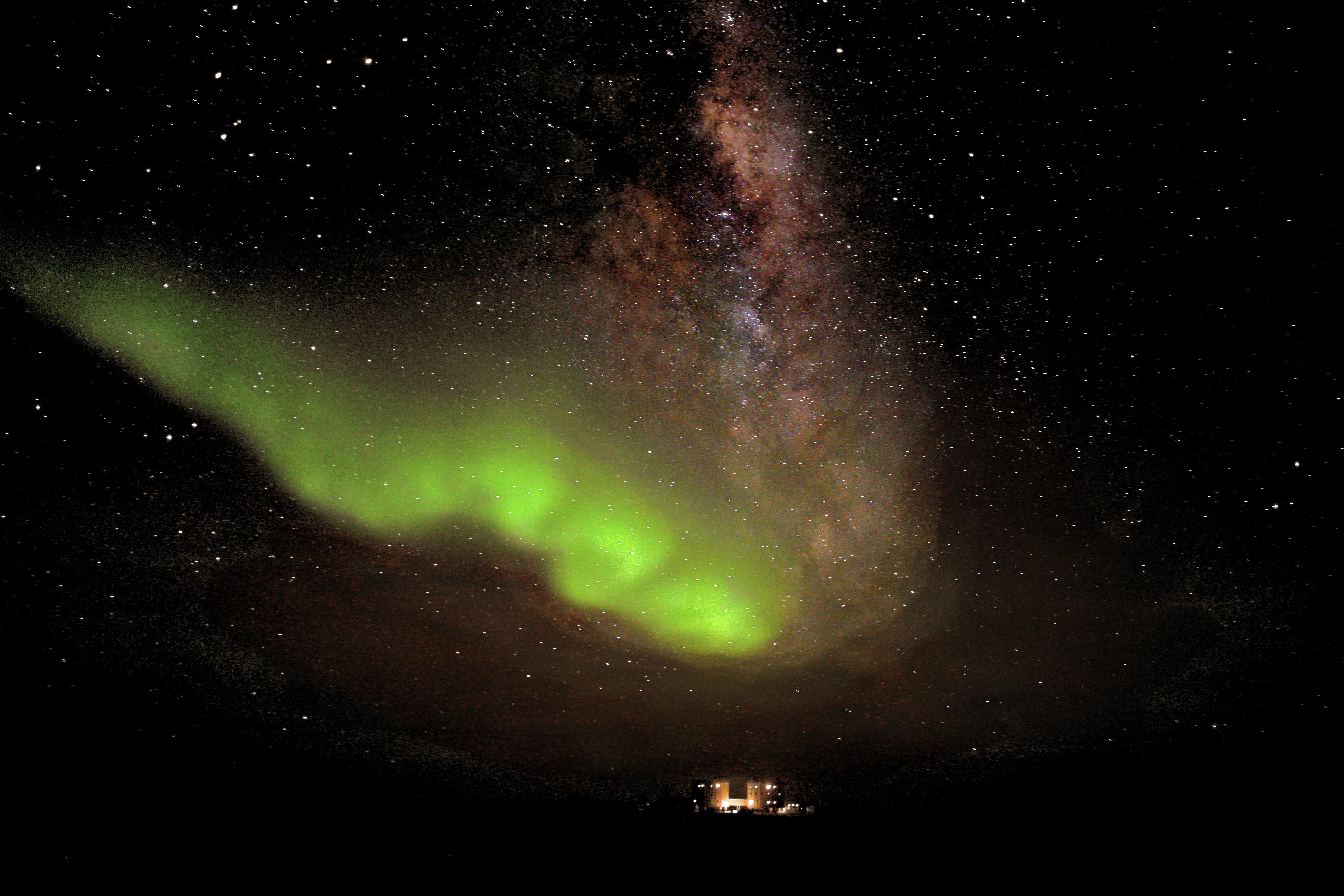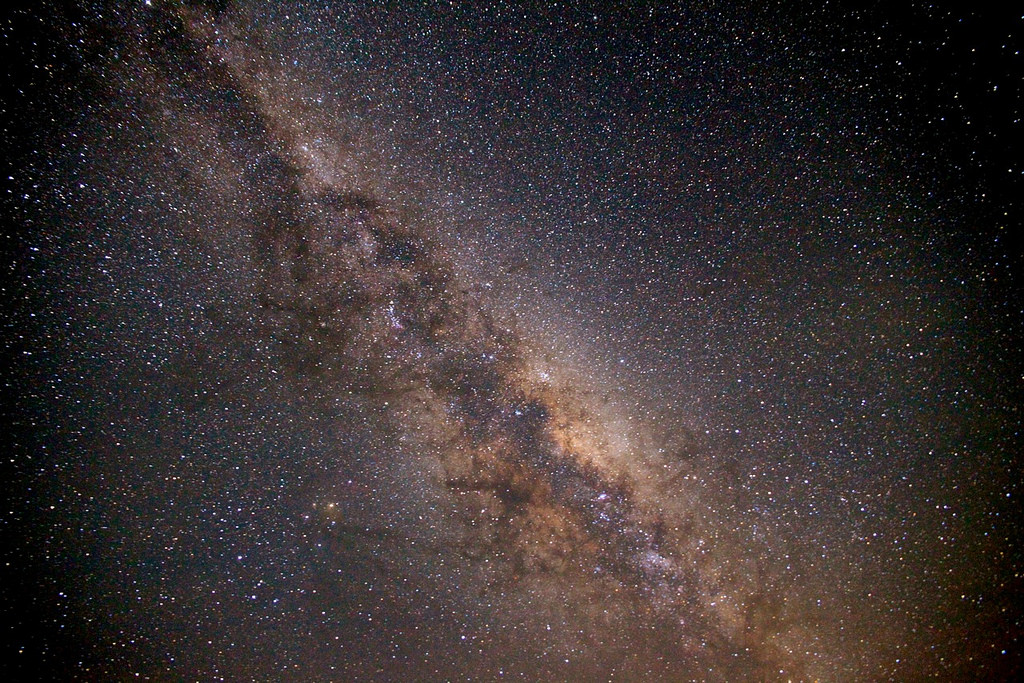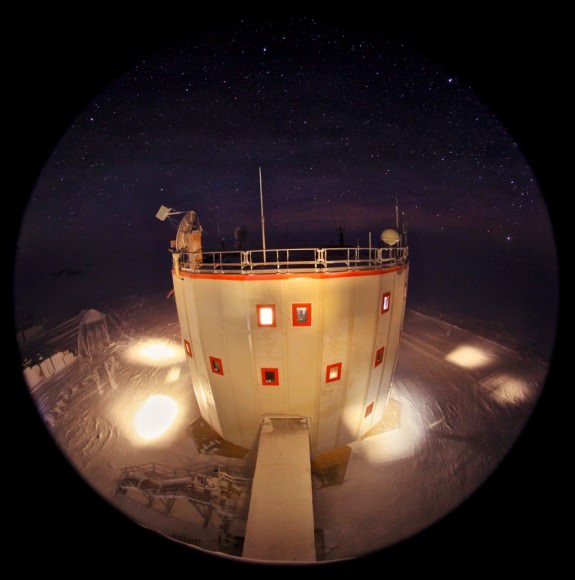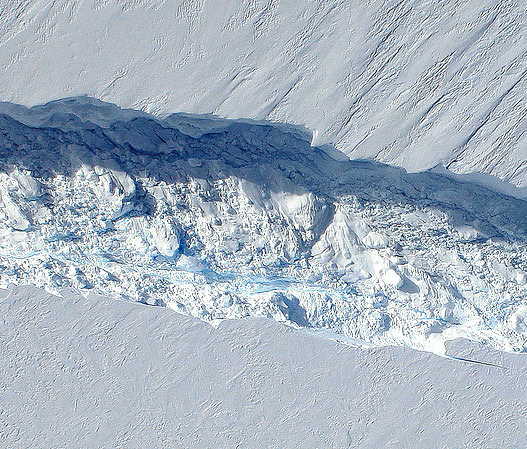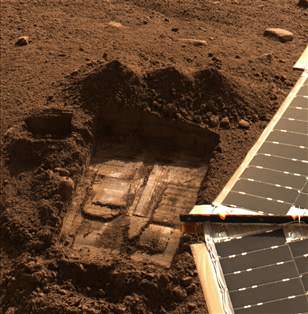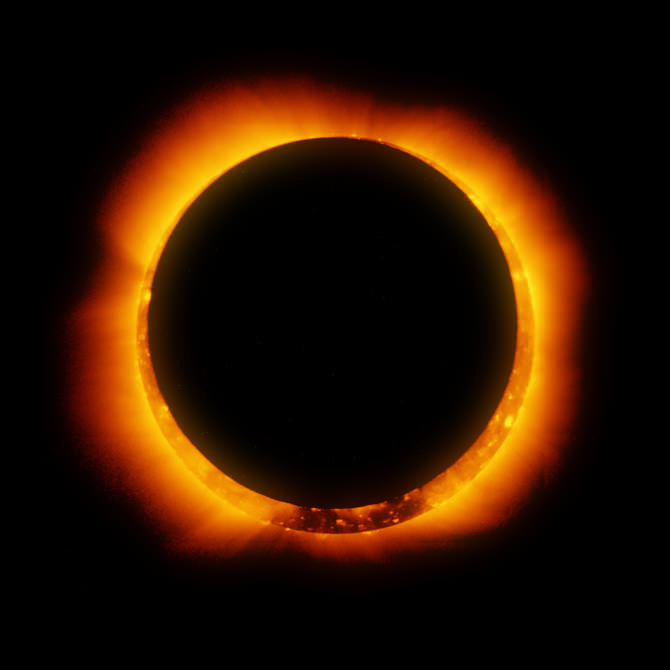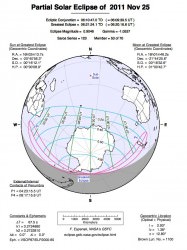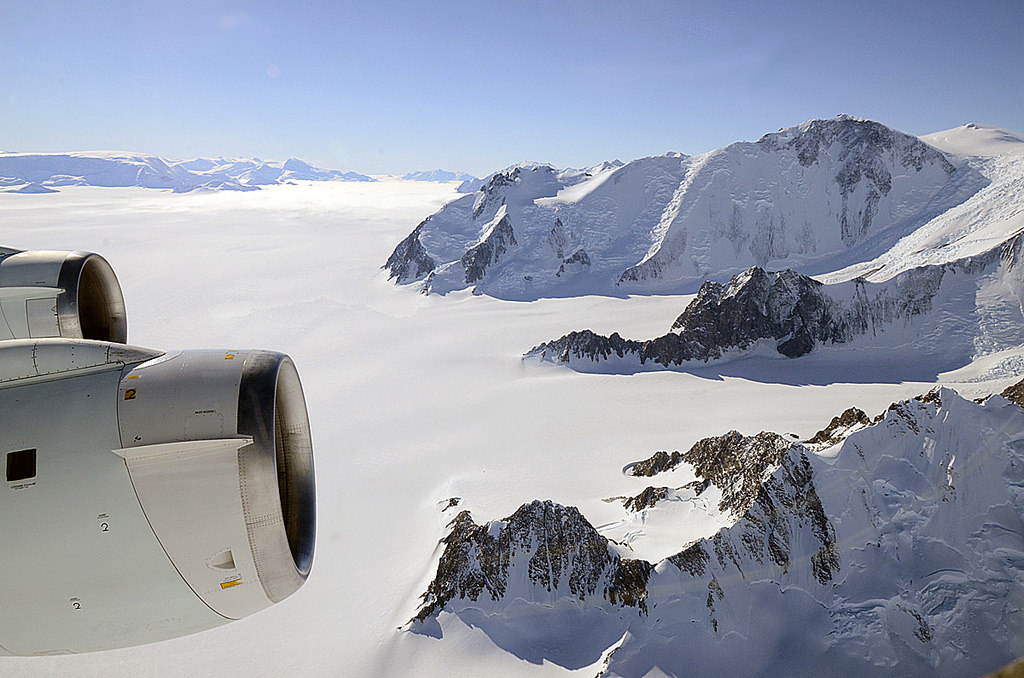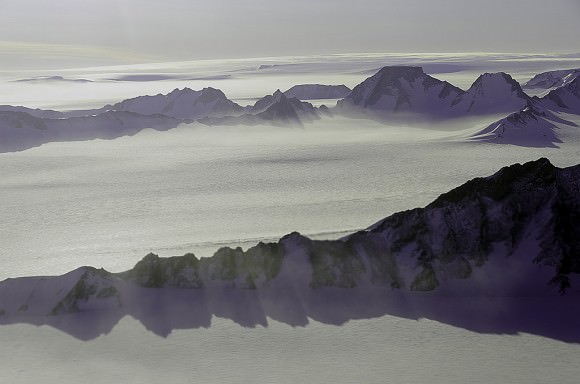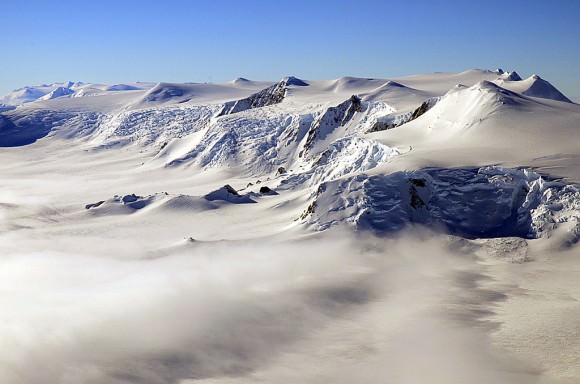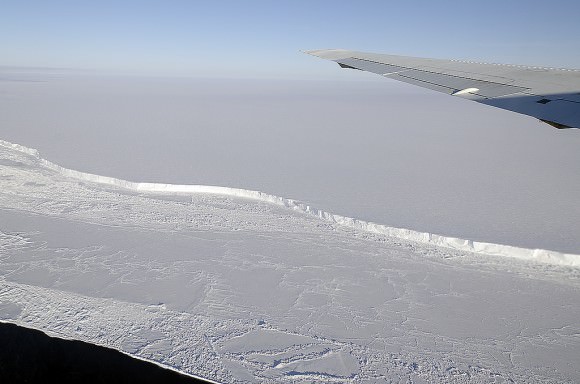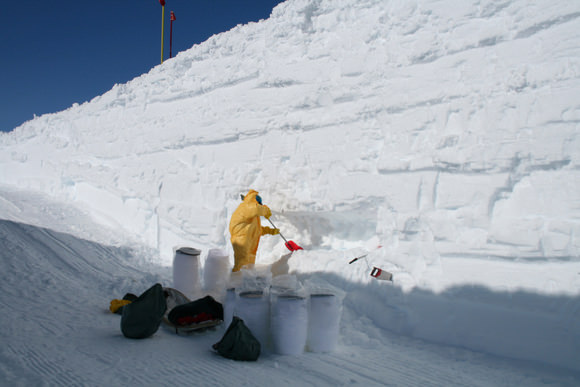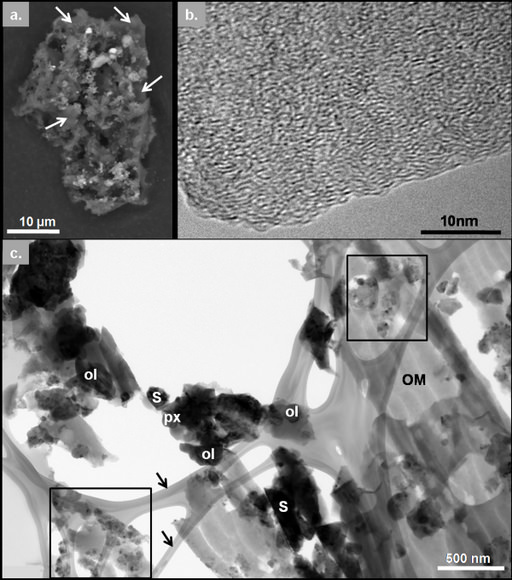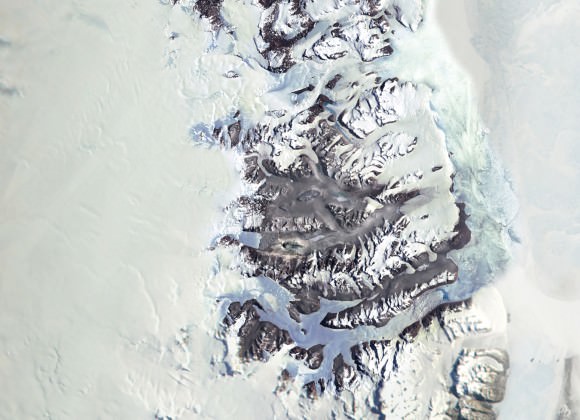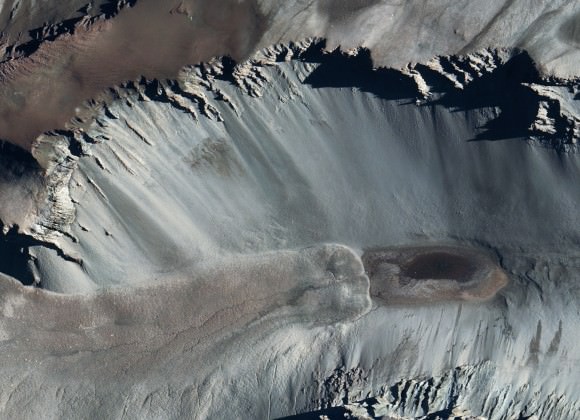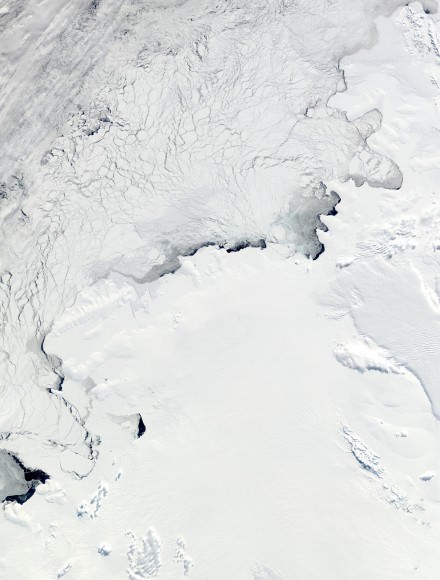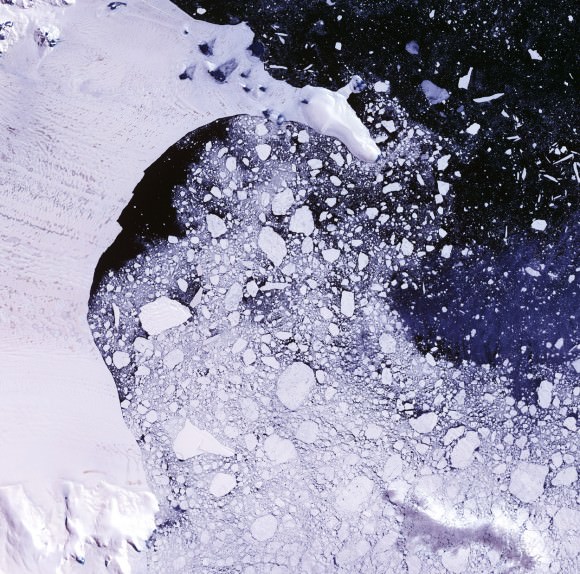[/caption]
It happens every summer in humid air: the salt in your salt shaker clumps together as the salt draws in the water from the air. Researchers have found this happens even in the frigid but dry McMurdo Dry Valley in Antarctica, a cold, polar desert. The sandy, salty soils there are frequently dotted with moist patches in the spring despite a lack of snowmelt and no possibility of rain. What was discovered is that the salty soils in the region actually suck moisture out of the atmosphere. Salty soils were found on Mars’ polar region by the Phoenix lander, so could the same thing be happening on the Red Planet, creating a salt brine within Mars’ soil? And if so what are the implications for life forming there?
Joseph Levy, a post-doctoral researcher from Oregon State University said it takes a combination of the right kinds of salts and sufficient humidity to make the process work. But those ingredients are present on Mars.
“If you have sodium chloride, or table salt, you may need a day with 75 percent humidity to make it work,” he added. “But if you have calcium chloride, even on a frigid day, you only need a humidity level above 35 percent to trigger the response.”
The soils in Antarctica have salt from sea spray and from ancient fjords that flooded the region. With enough humidity, those salty soils suck the water right out of the air, forming a brine, Levy said, that will keep collecting water vapor until it equalizes with the atmosphere.
Levy and his colleagues, from Portland State University and Ohio State University, found that the wet soils created by this phenomenon were 3-5 times more water-rich than surrounding soils – and they were also full of organic matter, including microbes, which they said could enhance the potential for life on Mars. The elevated salt content also depresses the freezing temperature of the groundwater, which continues to draw moisture out of the air when other wet areas in the valleys begin to freeze in the winter.
Though Mars, in general, has lower humidity than most places on Earth, studies have shown that it is sufficient to reach the thresholds that Levy and his colleagues have documented in Antarctica.
The parallels of what was found by the Mars Phoenix team is striking. The salty perchlorates found on Mars by the Phoenix lander also strongly attracts water and makes up a few tenths of a percent of the composition in all three soil samples analyzed by Phoenix’s wet chemistry laboratory. Principal investigator of the Phoenix mission, Peter Smith from the University of Arizona, Tucson, said the perchlorates could pull humidity from the Martian air.
A paper about Phoenix water studies, led by Smith, cites clues supporting an interpretation that the soil has had films of liquid water in the recent past. The evidence for water and potential nutrients “implies that this region could have previously met the criteria for habitability” during portions of continuing climate cycles.
At higher concentrations, it might combine with water as a brine that stays liquid at Martian surface temperatures. Some microbes on Earth use perchlorate as food, and future human explorers on Mars might find it useful as rocket fuel or for generating oxygen.
Levy and his team discovered the mysterious patches of wet soil in Antarctica, and then explored the causes. Through soil excavations and other studies, they eliminated the possibility of groundwater, snow melt, and glacial runoff. Then they began investigating the salty properties of the soil, and discovered that the McMurdo Dry Valleys weather stations had reported several days of high humidity earlier in the spring, leading them to their discovery of the vapor transfer.
“It seems kind of odd, but it really works,” Levy said. “Before one of our trips, I put a bowl of the dried, salty soil and a jar of water into a sealed Tupperware container and left it on my shelf. When I came back, the water had transferred from the jar to the salt and created brine.
“I knew it would work,” he added with a laugh, “but somehow it still surprised me that it did.”
The salty soils also are present on the Red Planet, which makes the upcoming landing of the Mars Science Laboratory this summer even more tantalizing.
Evidence of the salty nature of the McMurdo Dry Valleys is everywhere, Levy said. Salts are found in the soils, along seasonal streams, and even under glaciers. Don Juan Pond, the saltiest body of water on Earth, is found in Wright Valley, the valley adjacent to the wet patch study area.
“The conditions for creating this new water source into the permafrost are perfect,” Levy said, “but this isn’t the only place where this could or does happen. It takes an arid region to create the salty soils, and enough humidity to make the transference work, but the rest of it is just physics and chemistry.”
The study by Levy and his team was published online this week in the journal Geophysical Research Letters.
Sources: University of Oregon, previous article about the Phoenix Lander
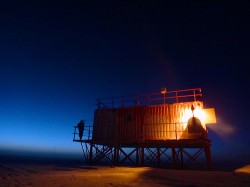 With winter temperatures as low as -70ºC (-100ºF), no sunlight and no transportation in or out from May to August, Concordia Base is incredibly isolated — so much so that it’s used for research for missions to Mars, where future explorers will face many of the same challenges and extreme conditions that are found at the Base.
With winter temperatures as low as -70ºC (-100ºF), no sunlight and no transportation in or out from May to August, Concordia Base is incredibly isolated — so much so that it’s used for research for missions to Mars, where future explorers will face many of the same challenges and extreme conditions that are found at the Base.
